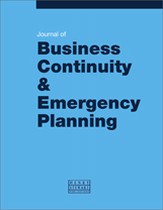Accessibility of Metro Vancouver fire-fighters following a damaging earthquake: A case study
Abstract
This case study focuses on the ability of Metro Vancouver’s fire personnel to access their regular workplace and home location immediately following, and in the hours and days after a major earthquake. In the event of such an incident, transportation infrastructure will be disrupted, limiting accessibility in the region. By examining the travel routes required by fire personnel, emergency planning can address any anomalies or identified gaps in service needs. This case study provides information to guide the development of regional policies and coordinated efforts to ensure that available fire personnel resources are deployed in the most beneficial and effective way. Other first-responder and receiver agencies should consider conducting similar evaluations as the findings and recommendations presented here generalise to other disasters where staff resources will be limited. Further research is recommended to determine resource needs in the event of a major disaster. Once a better picture of the total resource needs is known, a gap analysis can be conducted to identify what resources are available and accessible from within Metro Vancouver and what resources would need to come from outside the region.
The full article is available to subscribers to the journal.
Author's Biography
Stephen Traviss is Director of Human Resources for the City of Port Coquitlam, a municipality of 60,000 residents in the Metro Vancouver region. He has a master’s degree in interdisciplinary studies from Royal Roads University and is a Chartered Professional in Human Resources.
Citation
Traviss, Stephen (2019, September 1). Accessibility of Metro Vancouver fire-fighters following a damaging earthquake: A case study. In the Journal of Business Continuity & Emergency Planning, Volume 13, Issue 1. https://doi.org/10.69554/UCUJ8529.Publications LLP
